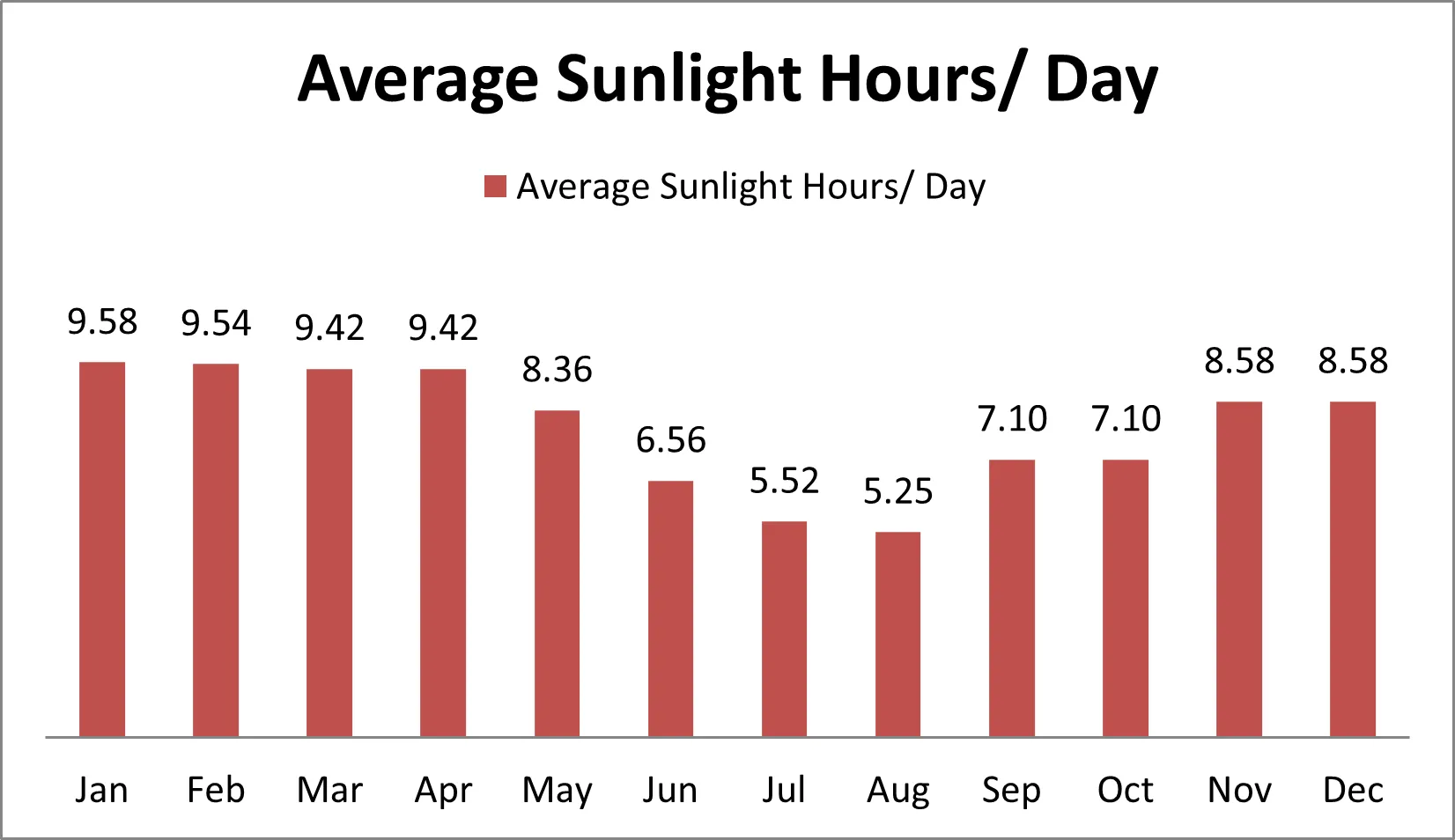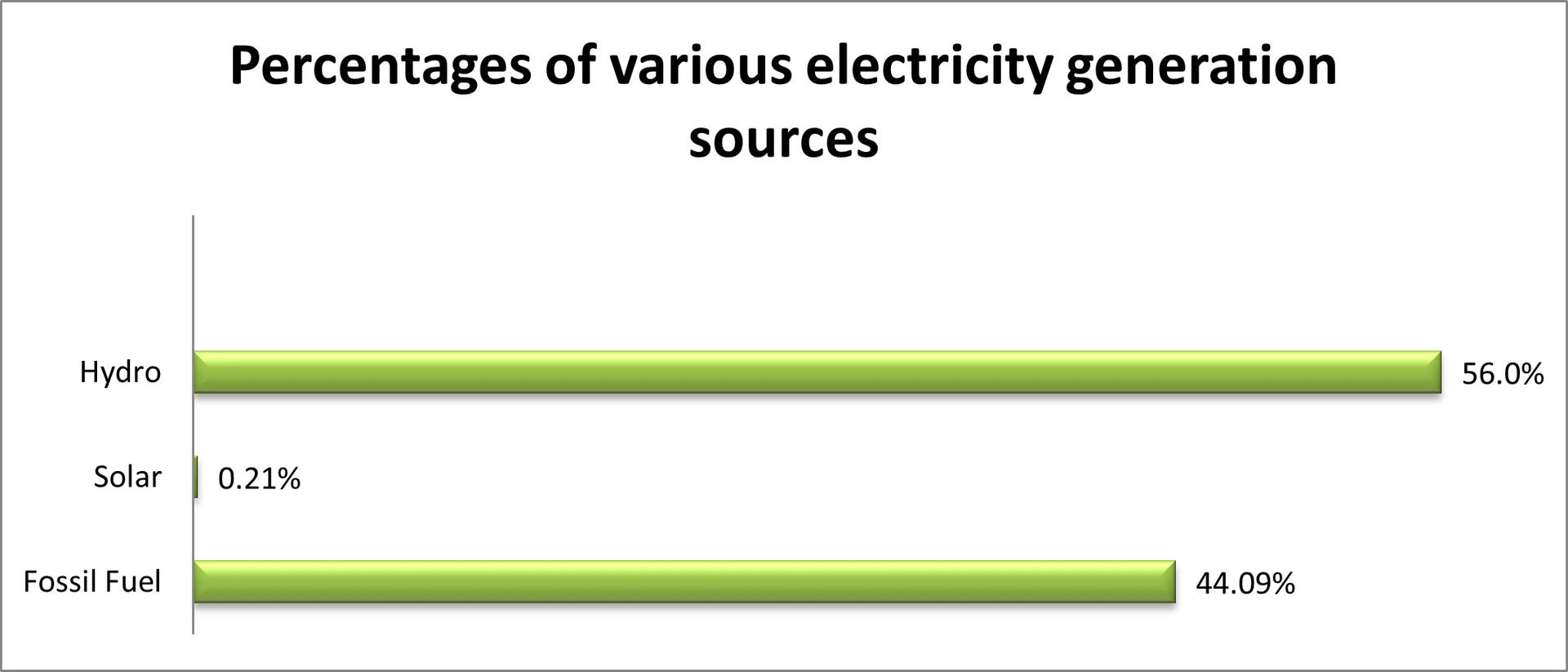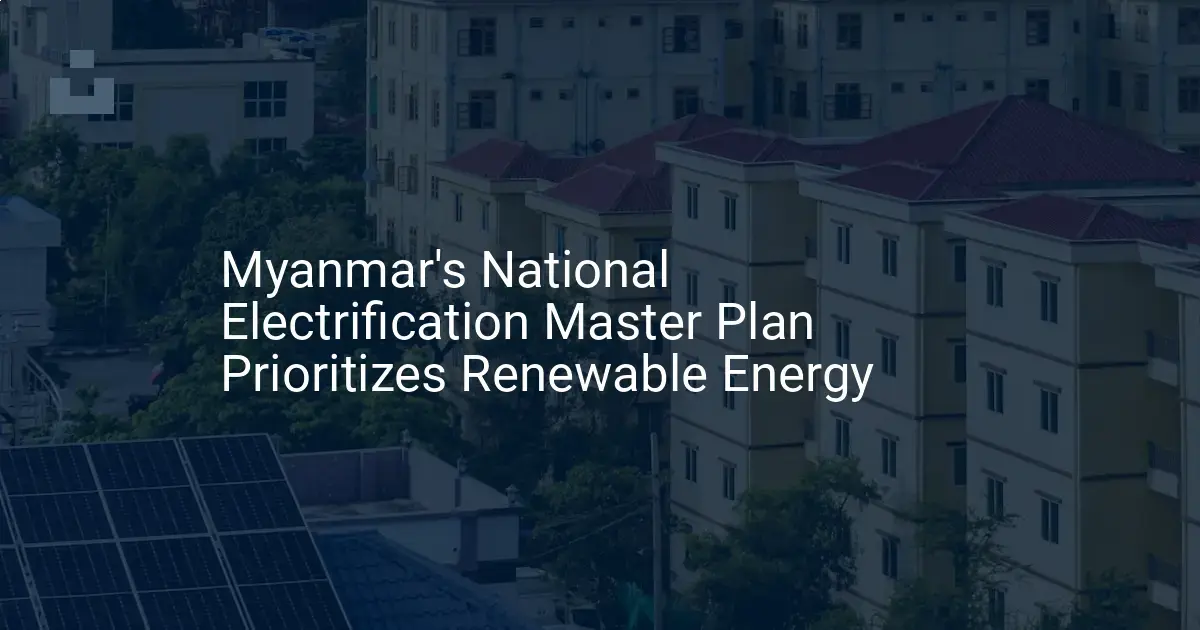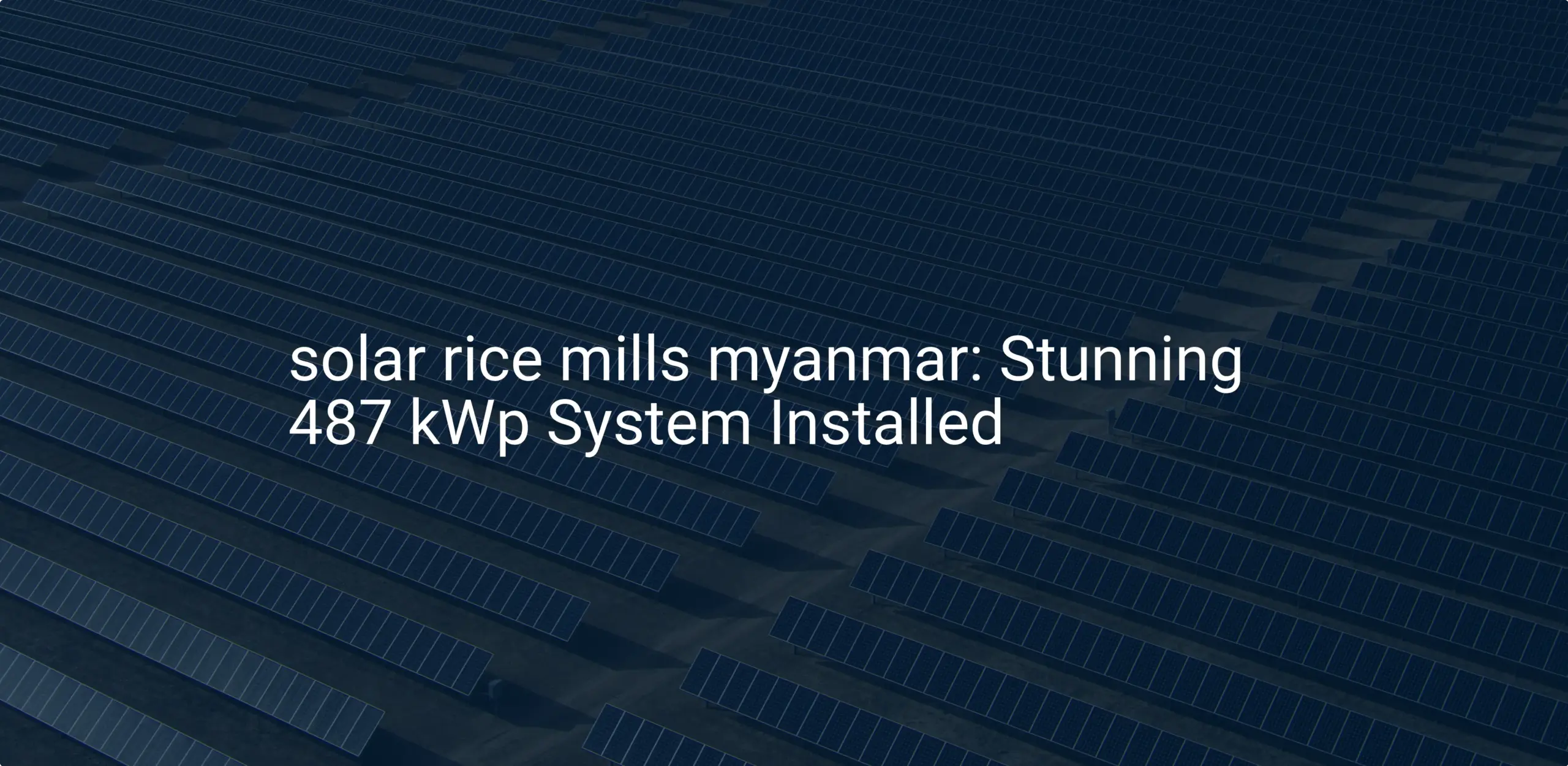Gain comprehensive insights into the statistics and metrics surrounding the solar production industry in Myanmar (Burma)
- Climate.top. (n.d.). Sunshine & daylight hours in Mandalay, Myanmar sunlight, cloud & day length. Retrieved January 2, 2025, from https://www.climate.top/myanmar/mandalay/sunlight/
- Solar Magazine. (n.d.). Myanmar solar: Lots of potential, but a cloudy outlook for solar energy development and growth. Retrieved January 3, 2025, from https://solarmagazine.com/solar-profiles/myanmar/
- GlobalPetrolPrices.com. (2024, March). Burma (Myanmar) electricity prices, March 2024. Retrieved January 4, 2025, from https://www.globalpetrolprices.com/Burma-Myanmar/electricity_prices/
- Sinalda.com. (n.d.). Voltage in Myanmar (Burma) – Electricity supply and power quality overview. Retrieved January 2, 2025, from https://www.sinalda.com/world-voltages/asia/voltage-myanmar/
- International Renewable Energy Agency. (2024). Renewable energy statistics 2024. Retrieved November 9, 2023, from https://www.irena.org/-/media/Files/IRENA/Agency/Publication/2024/Jul/IRENA_Renewable_Energy_Statistics_2024.pdf
- World Bank. (n.d.). World Bank document. Retrieved January 3, 2025, from https://openknowledge.worldbank.org/server/api/core/bitstreams/971171fb-ab68-4138-ac7c-f7935d007115/content
- Wikipedia. (n.d.). Energy in Myanmar. Retrieved January 2, 2025, from https://en.wikipedia.org/wiki/Energy_in_Myanmar#cite_note-EPGE_Press_Conference-8
- Worldometer. (n.d.). Myanmar electricity statistics. Retrieved January 2, 2025, from https://www.worldometers.info/electricity/myanmar-electricity/
- The World Bank. (2023, June). Myanmar Power Sector Review Jun 2023. Retrieved January 4, 2025, from https://thedocs.worldbank.org/en/doc/6bd0c527c8469333b119d88cc0b8b410-0070062023/original/In-The-Dark-Power-Sector-Challenges-in-Myanmar-August2023.pdf
- Trade.gov. (n.d.). Burma – Energy. Retrieved January 2, 2025, from https://www.trade.gov/country-commercial-guides/burma-energy
- The Rockefeller Foundation. (n.d.). Accelerating rural electrification in Myanmar. Retrieved January 4, 2025, from https://www.rockefellerfoundation.org/insights/perspective/accelerating-rural-electrification-myanmar/
- Global New Light of Myanmar. (n.d.). Six solar power plants in operation, 13 under construction. Retrieved January 3, 2025, from https://www.gnlm.com.mm/six-solar-power-plants-in-operation-13-under-construction/
- Chen, L.-C. (2023). Turning on the lights with renewable energy: Solar PV mini-grid system for lighting in Myanmar. In Moving Toward Net-Zero Carbon Society (pp. 39–57). Springer. https://doi.org/10.1007/978-3-030-93967-1_4 , https://link.springer.com/chapter/10.1007/978-3-031-24545-9_3
- Frontier Myanmar. (n.d.). Solar energy grows in Myanmar despite junta restrictions. Retrieved January 2, 2025, from https://www.frontiermyanmar.net/en/solar-energy-grows-in-myanmar-despite-junta-restrictions/
- Worldsalaries.com. (n.d.). Average solar engineer salary in Myanmar for 2025. Retrieved January 4, 2025, from https://worldsalaries.com/average-solar-engineer-salary-in-myanmar/
- Worldometer. (n.d.). Myanmar population (2025). Retrieved January 2, 2025, from https://www.worldometers.info/world-population/myanmar-population/
- Myanmar Housing. (n.d.). Myanmar real estate | Yangon City – Tharketa – Industrial property – Warehouse to rent in Tharketa Industrial Zone!. Retrieved January 3, 2025, from https://www.myanmar-housing.com/lvdetail.php?number=1083
- Property in Myanmar. (n.d.). Office space in Myanmar. Retrieved January 4, 2025, from https://propertyinmyanmar.com/property-type/office-space/
- International Energy Agency. (n.d.). Myanmar – Countries & regions. Retrieved January 2, 2025, from https://www.iea.org/countries/myanmar/electricity
- Wikipedia. (n.d.). Ministry of Electricity and Energy (Myanmar). Retrieved January 3, 2025, from https://en.wikipedia.org/wiki/Ministry_of_Electricity_and_Energy_(Myanmar)
- Trading Economics. (n.d.). Myanmar – Access to electricity (% of population) – 2025 data 2026 forecast 1990-2022 historical. Retrieved January 4, 2025, from https://tradingeconomics.com/myanmar/access-to-electricity-percent-of-population-wb-data.html
- Observatory of Economic Complexity. (n.d.). Burma (MMR) Exports, imports, and trade partners. Retrieved January 3, 2025, from https://oec.world/en/profile/country/mmr
- Global New Light of Myanmar. (n.d.). Solar, relevant components exempt from customs duties. Retrieved January 3, 2025, from https://www.gnlm.com.mm/solar-relevant-components-exempt-from-customs-duties/
- Myanmar Legal Services. (2021, January). Chandler and Thong-ek. Retrieved January 3, 2025, from https://www.myanmarlegalservices.com/wp-content/uploads/2021/01/Solar-PV2823325_1.pdf
- Tilleke & Gibbins. (n.d.). Myanmar’s Union Tax Law 2023 encourages imports of electric vehicles and solar panels. Retrieved January 2, 2025, from https://www.tilleke.com/insights/myanmars-union-tax-law-2023-encourages-imports-of-electric-vehicles-and-solar-panels/
- Global Energy Alliance for People and Planet. (n.d.). Solar to power up Myanmar’s agricultural economy. Retrieved January 4, 2025, from https://energyalliance.org/project/solar-to-power-up-myanmars-agricultural-economy/
- Nexus for Development. (n.d.). Pioneer Facility invests in Techno Hill to expand solar microgrids in Myanmar. Retrieved January 3, 2025, from https://www.nexusfordevelopment.org/pioneer-facility-invests-in-techno-hill-to-expand-solar-microgrids-in-myanmar/
- Power Technology. (n.d.). Power plant profile: Minbu-GEP Solar Park, Myanmar. Retrieved January 2, 2025, from https://www.power-technology.com/data-insights/power-plant-profile-minbu-gep-solar-park-myanmar/
- Project Bank Myanmar. (n.d.). Nabuaing Solar Power Project (150 MW) (Phase 1 25 MW and other phases 125 MW) | Profile. Retrieved January 3, 2025, from https://www.projectbank.gov.mm/en/profiles/activity/PB-ID-1209/
- Project Bank Myanmar. (n.d.). Wundwin Solar Power Project (150 MW) (Phase 1 25 MW and other phases 125 MW) | Profile. Retrieved January 2, 2025, from https://www.projectbank.gov.mm/en/profiles/activity/PB-ID-1194/
- GP Energy Myanmar. (n.d.). Taungdaw Gwin Solar PV Project – 20 MW. Retrieved January 4, 2025, from https://gpenergymm.com/project/taungdaw-gwin-solar-pv-project-20-mw-2/
- Power Technology. (n.d.). Power plant profile: Letpanhla Solar PV Park, Myanmar. Retrieved January 3, 2025, from https://www.power-technology.com/data-insights/power-plant-profile-letpanhla-solar-pv-park-myanmar/
- Power Technology. (n.d.). Power plant profile: Buddhakone Solar PV Park, Myanmar. Retrieved January 4, 2025, from https://www.power-technology.com/marketdata/power-plant-profile-buddhakone-solar-pv-park-myanmar/













